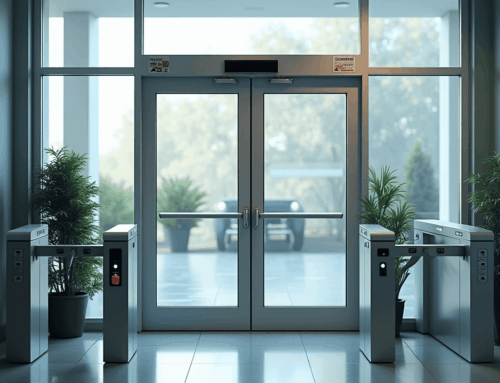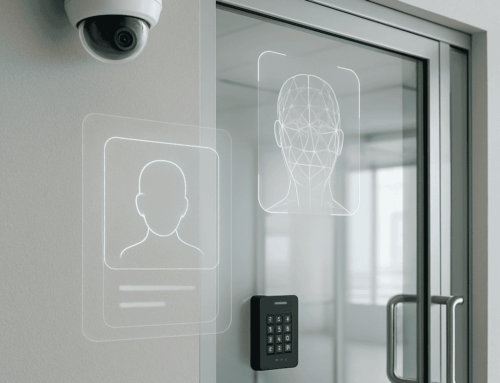Video wall essentials: Bringing movement and color into a room
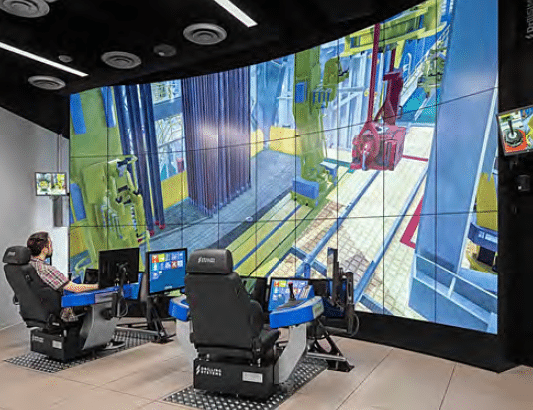
Every year consumer televisions are getting larger, sharper, and brighter. That doesn’t mean that creating a video wall in your lobby or conference space is as easy as buying the biggest and best flatscreen you can find. To create an expansive view for videos, graphics, and other digital assets, you want to examine the installation space, your goals for the video wall, and the types of content you will display.
A well-executed video wall allows you to change the look and feel of a room at the touch of a button and visually engage visitors with a curated stream of content. Companion audio is an option, but many video walls appear in spaces where the communication happens with visuals alone.
When Is A Video Wall More Than Just A Big TV?
When you want to create an immersive experience, you need to go beyond a single screen. A common approach to building a video wall is to composite multiple screens into a 3×3, 3×4, or a similar arrangement where the screens can operate as a single display or independent of each other. In the early days of flatscreen technology, each screen needed a wide bezel, and the composite effect was far from seamless. Today, there are various display types and configurations, including continuous, outdoor, and curved displays. Technology has opened a world of possibilities.
Hospitals and medical facilities
Hospital lobbies and corridors are great places to install video walls. In a medical environment, it’s important to educate and help visitors feel safe. You can intersperse mood-setting footage with stories or data-driven graphics to show people some of the things that happen every day at the facility.
Corporate lobbies
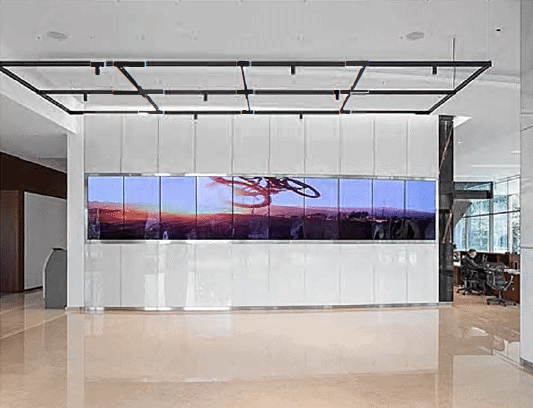
Setting up a video wall in your corporate headquarters’ lobby is a great way to show off your brand and tell the company’s story. Clients, employees, and visitors will spend time waiting in the lobby. By displaying an engaging stream of content, you provide them with a welcome distraction and set the tone for your interaction.
Conference centers
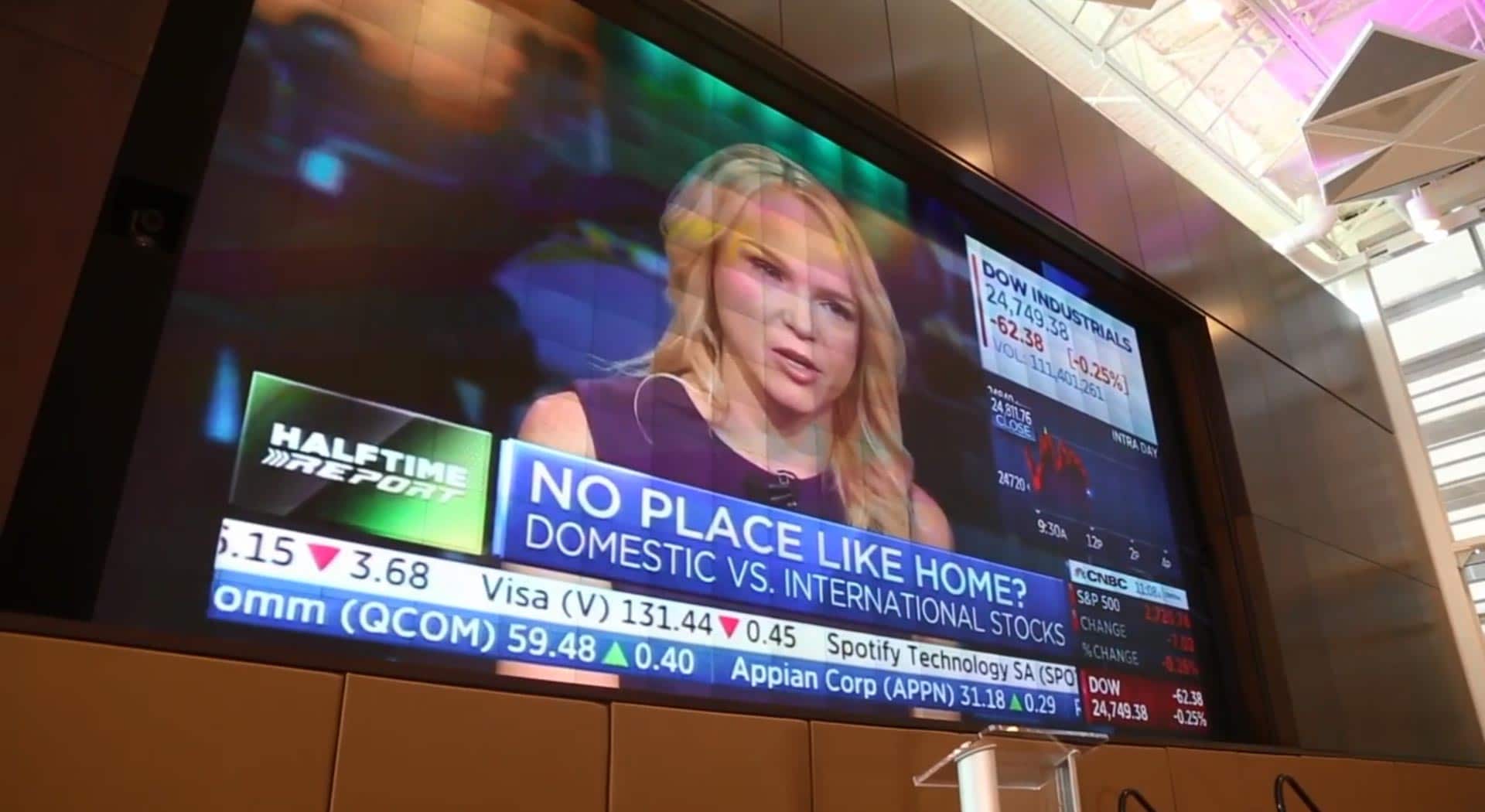
Video walls can be especially useful in venues with high ceilings and large walls. A conference setting is ideal because of the ever-changing nature of the audience and theme. Rather than requiring extensive signage, a video wall in the right location allows your conference hosts to inspire the attendees, convey necessary information, and make changes at a moment’s notice.
Schools
Video walls can be especially useful in venues with high ceilings and large walls. A conference setting is ideal because of the ever-changing nature of the audience and theme. Rather than requiring extensive signage, a video wall in the right location allows your conference hosts to inspire the attendees, convey necessary information, and make changes at a moment’s notice.
Video Wall Technology Hardware
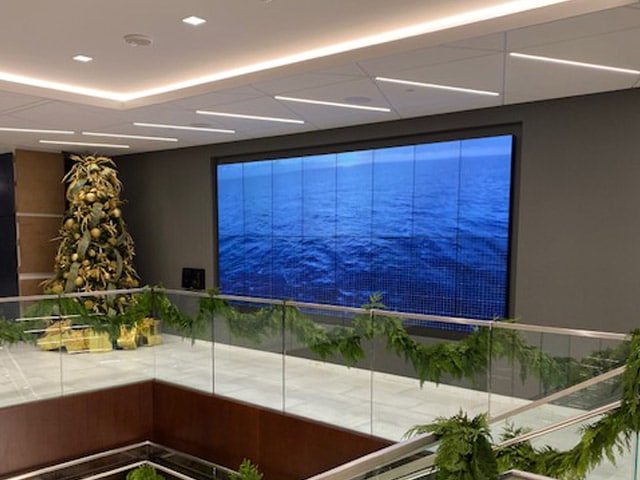
There are three main types of display technology used in video walls. Each has pros and cons. You will need to weigh factors such as cost, power consumption, surface area, activity life-cycle, and ambient light conditions to pick the solution that fits your space.
LCD Video Wall Displays
These high-brightness displays are usually tiled together and have noticeable bezels. They’re low-cost and work well in small-to-medium-sized wall spaces since they don’t require much infrastructure to install. LCDs tend to suffer from burn-in (when a persistent image stays visible on the screen due to continuous use) and shorter active lifespans.
LED Video Wall Displays
LED displays bring an extra wow-factor to the video wall experience. They have bright, vibrant colors and can be tiled together without bezels or gaps — forming a near-seamless display. These advantages are counter-balanced by the high cost and power consumption of LED displays. However, they’re also comparatively thin and light-weight, a real bonus in specific scenarios.
Rear-projection Displays
Thanks to compact projection technology, these displays have an excellent lifespan with no burn-in tendency and minimal inter-tile gaps. Typically rear-projection displays are used in settings where they need to run 24/7, and reliability is prized over vibrancy, brightness, or thinness.
How To Estimate The Cost For Your Video Wall Project
Costs vary dramatically based on the number of units, display technology, infrastructure, and installation environment. LED displays can cost anywhere from $17,000 to $25,000 per square meter, with total projects running into the mid-six figures. On the other hand, a basic 2×2 LCD video wall could cost as little as $4800, with larger configurations running as high as $30,000. Rear-projection displays can run as much as $10,000 per cube before factoring in the higher installation costs. Maintenance costs such as power consumption and reliability are also important factors. However, due to the wide range of specifications, you need to consult with an expert who can give you a detailed breakdown of various solutions.
About i.e.Smart Systems
i.e.Smart Systems is a Houston, TX based technology integration partner that specializes in design and installation of audio/visual technology and structured cabling. For more than three decades, our team of in-house experts has partnered with business owners, architectural firms, general contractors, construction managers, real estate developers, and designers in the Houston market, to deliver reliable, scalable solutions that align with their unique goals.

